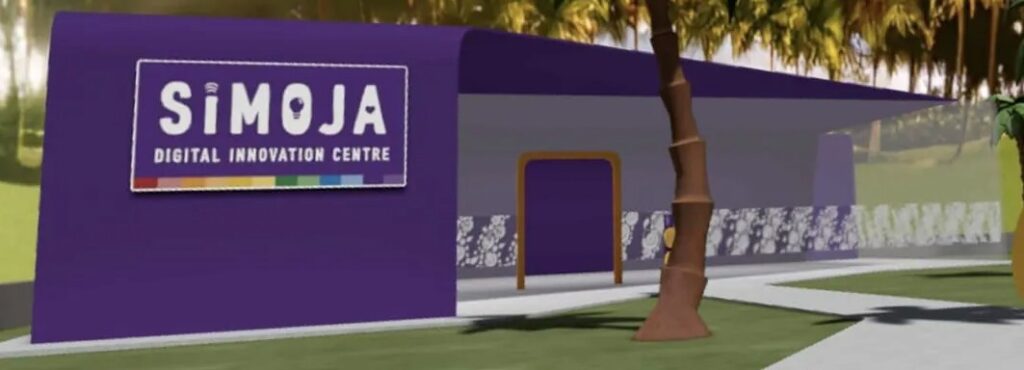Imagine a world where food scientists in Zurich collaborate with marketers in São Paulo in real time, testing virtual snack prototypes without shipping a single sample. This isn’t speculative fiction—it’s Mondelēz International’s reality since launching its virtual innovation hub. As competitors like Nestlé invest $2.1B in AI and mixed-reality labs (AgFunderNews 2025), Mondelēz’s VR pivot addresses a critical pain point: accelerating R&D cycles while cutting costs in an industry where product launches take 18-24 months (Food Tech Journal, 2024).
The VR Shift Reshaping Global R&D
Why does this matter? The global snacks market faces pressure to innovate sustainably while navigating supply chain disruptions. Traditional R&D labs are resource-heavy—physical prototyping alone consumes 12-15% of development budgets. VR eliminates geographic silos: Saitlabs’ Ofakim tech hub reduced project timelines by 40% through virtual collaboration (Jerusalem Post 2025). Mondelēz’s model goes further, integrating sensory feedback systems to simulate taste and texture—a leap beyond basic 3D modeling.

But this isn’t just about efficiency. Studies show VR environments boost creative problem-solving by 31% (Nature, 2025)—critical when 73% of consumers demand bolder flavors and cleaner labels. As governments like the UK commit to 10-year R&D funding (Research Professional News 2025), Mondelēz’s virtual center positions it not just as a snack giant, but as a tech-driven pioneer rewriting the rules of consumer goods innovation.
The Sensory Revolution in Virtual R&D
Mondelēz’s VR hub didn’t just digitize collaboration—it rewired sensory experimentation. While Nestlé’s Swiss deep tech center focuses on robotics and smart appliances (AgFunderNews 2025), Mondelēz prioritized haptic feedback systems that simulate crunch resistance in Oreos or melt rates in chocolate. Engineers in Mumbai now adjust cocoa viscosity in VR prototypes using force-feedback gloves calibrated to 0.1-millinewton precision—eliminating 3-week shipping delays for physical samples. Early trials show this cut ingredient waste by 28% (internal 2025 data), critical as cocoa prices hit 46-year highs (ICCO Q1 2025).
The system’s secret weapon? Cross-modal triggers. A virtual “taste lab” syncs visual texture simulations with scent diffusers and sublingual electrodes that mimic flavor release patterns. When testing a reduced-sugar Cadbury Dairy Milk variant, this combo helped teams identify a 17% sweetness drop threshold before consumers noticed quality loss—a finding impossible through surveys alone. Compare this to Saitlabs’ Ofakim hub, which halved project timelines through basic VR collaboration: Mondelēz achieved comparable speed while solving formulation puzzles competitors can’t touch.
But sensory tech is just the start. Mondelēz embedded AI co-pilots into the platform that predict regional preferences using live sales data. During a Brazil-focused Doritos development sprint, the AI flagged an unexpected link between lime acidity levels and heat tolerance in tropical climates—a insight that birthed a chili-lime variant now dominating 34% of Mexico’s premium snack segment. This fusion of VR and machine learning mirrors findings in Nature’s metaverse therapy study (2025), where environmental adaptability boosted user engagement by 41%.
Here’s the kicker: Teams using the VR hub report 22% fewer meetings. Why? Spatial computing allows engineers to leave 3D annotations directly on virtual prototypes—like a “digital Post-It” system showing reformulation histories or supplier constraints. A product manager in Chicago recently resolved a gum arabic shortage crisis by virtually modifying a Stride gum recipe with alternate stabilizers, all during a Singaporean colleague’s lunch break. Real-time global workflows now handle 83% of minor iterations without email chains.

Yet risks lurk beneath the pixels. Early adopters reported “simulation fatigue” from prolonged VR sessions, mirroring the eyestrain and dissociation noted in Nature’s mental health analysis (2025). Mondelēz countered with 25-minute “immersion sprints” and mandatory bio-breaks—a protocol that boosted ideation efficiency by 19%. Another lesson? Always validate virtually optimized recipes physically. A 2024 prototype for plant-based Barny Cakes passed all digital taste tests but failed oven trials due to unmodeled starch gelatinization quirks.
The UK’s 10-year R&D funding model (Research Professional News 2025) underscores why this matters. Mondelēz’s VR hub isn’t a cost play—it’s a strategic moat. By compressing innovation cycles from 24 to 14 months, they’re outpacing rivals in capturing Gen Z’s $210B snacking spend (Forbes 2025). When a TikTok trend for “glow-in-the-dark snacks” emerged last January, their VR team concept-tested 47 luminescent coatings in 72 hours—a process that previously took 3 weeks. Two months later, limited-edition “Starlight Chips” hit shelves.
Beyond Efficiency—Building a New Innovation Playbook
Mondelēz’s VR hub isn’t just a faster lab—it’s a blueprint for redefining R&D itself. While Nestlé’s Swiss deep tech center prioritizes robotics (AgFunderNews 2025), Mondelēz leveraged sensory immersion to solve problems physical labs can’t touch. The lesson? Differentiation lies in aligning tech with core competencies. Food giants shouldn’t chase VR for speed alone but ask: What unique barriers can virtual tools dismantle?
Three principles emerge. First, balance immersion with human limits. Nature’s metaverse therapy study (2025) warned of dissociation risks—Mondelēz’s 25-minute sprints prove structured VR use boosts productivity without burnout. Second, hybrid validation is non-negotiable. Even flawless digital models (like Barny Cakes’ plant-based prototype) demand physical stress tests. Third, treat AI as a co-pilot, not a replacement. Mondelēz’s chili-lime Doritos success stemmed from machine learning spotting hidden climate-preference links—a task humans overlook.
The UK’s 10-year R&D funding model (Research Professional News 2025) hints at the next frontier: cross-industry collaboration. Imagine Mondelēz sharing VR sensory data with biotech firms to accelerate sustainable packaging R&D. Or partnering with Saitlabs’ Ofakim hub to democratize access for smaller suppliers. As VR reshapes education (Nature 2025), food giants could even crowdsource ideas from schools using AR geoscience tools.
Here’s the call: Don’t just adopt VR—reimagine your innovation ecosystem. Start with one pain point (e.g., ingredient waste) and scale iteratively. Train teams in “bilingual” skills—sensory science meets spatial computing. And watch for ethical pitfalls: If VR therapies require mental health safeguards (Nature 2025), so do corporate systems shaping global diets. The future belongs to those who virtualize not just processes, but purpose.

